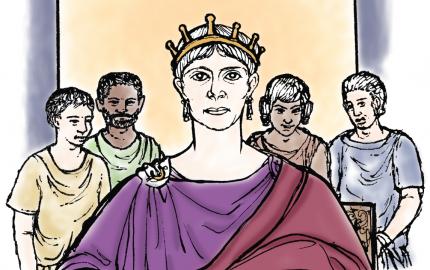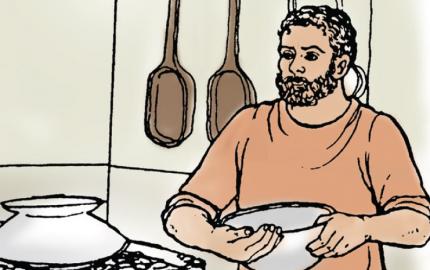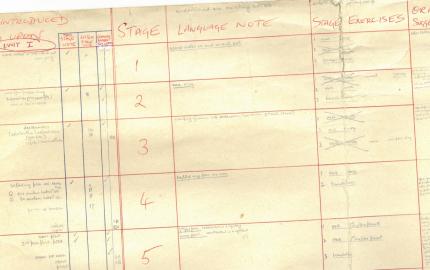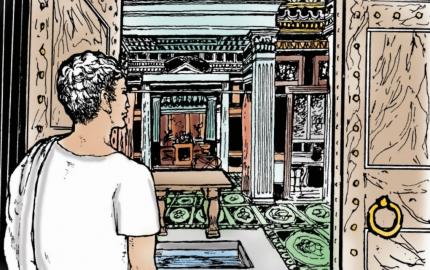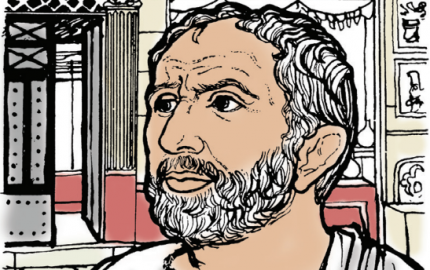How is the new edition of the Cambridge Latin Course being received by students in the Latin classroom? In this post, Joanna Johnson, Head of Classics at Solihull School, shares her first impressions of the new textbook, and some of her students' most interesting reactions!
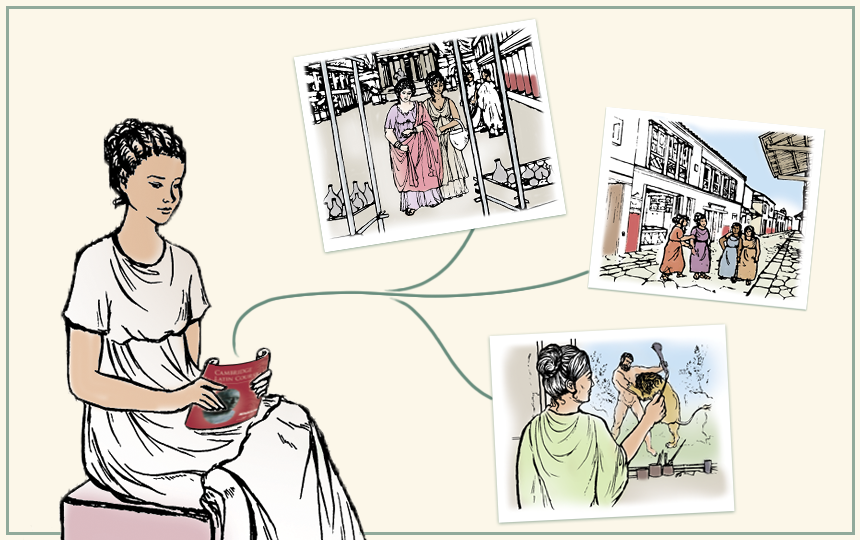
Submitted by Anonymous on Thu, 07/09/2023 - 11:27
Lucia reads from Book I of the 5th edition, featuring female characters both old and new
Having taken my own first steps in Latin with the Cambridge Latin Course and used it as a teacher for over twenty years, I was thrilled to hear the CLC was getting a new edition. I quickly shared my thoughts with the ‘Caecilius is Listening’ project and joined the Cambridge Latin Community Panel. What I saw as a member of the panel got me even more excited, and I couldn’t wait to introduce my year 7 classes to the new edition. In September 2022, I did just that. A few of my pupils had some exposure to Latin via the Minimus book but none had seen the CLC before; they had no knowledge of the 4th edition and the 5th edition was completely new to them. A year on, these are the things that struck me most about my student’s responses to the new book.
*
There were two things about Book I that I liked straight away and enjoyed teaching: the way women were more prominently represented, and the revitalised background material, now with enquiry questions and thinking points. In Stage 1 both Metella and Lucia are introduced, along with the other members of Caecilius’ familia, and this time, they are both seen in the stage doing something active – reading and writing. As this was their first meeting with the people of Pompeii, my two year 7 classes readily accepted that at least some Roman women were educated and literate. The background material to Stage 1 gave my pupils more information about what it was like to be a woman in Pompeii and how it differed from being a woman today. That really helped to generate some excellent discussion, with both girls and boys drawing out and making some insightful points. The girls were fascinated by the contrast made between the constrained view of a woman's life presented in the background material, and the depiction of Metella and Lucia reading and writing. They found Roman naming conventions for girls and ideas about the legitimacy of babies especially interesting, and this prompted some great discussion about the necessity of being married in the ancient world compared with how couples can live together without being married today.
Lucia’s talking head about the layout of the house also prompted a good discussion, as Lucia would be expected to run her own household one day. This started a debate on who does what in the pupils’ own houses, and led to the girls challenging some of the boys on exactly how much housework they felt the boys should be doing, with some very interesting reactions. Needless to say, the boys left that day knowing precisely what the girls expected of them!
Stage 3 was another fun stage to teach. Melissa is introduced in this stage, and the stories are now very different from those in the 4th edition. The first two stories in the stage, in foro and artifex, straightaway present women in a prominent position; the artist Clara is the first person to greet Caecilius in the story in foro, and the second story artifex shows us Clara at work in Caecilius’ house. This story prompted some fascinating responses from my pupils. We discussed how we thought Clara may have become an artist and what her status was. Their answers ranged from her being from a wealthy family who had supported her in her ambition to become an artist, to her being an enslaved person who had bought her way out of slavery, to having run away because her family didn’t approve of her being an artist!
The story ornatrix in Stage 3 is told from Melissa’s viewpoint and focuses on her anxiety in coming to a new country as an enslaved person, a change from the male-gaze version we had previously. Again, unaware that there had ever been other versions, my pupils didn’t bat an eyelid at this change in perspective, and again, the story generated some excellent discussion about why Melissa was feeling anxious and how they would expect to feel if the same thing happened to them in the ancient world. It also allowed the pupils to discuss times and situations when they felt anxious, such as starting a new school, and gave them space to explore those feelings. I think that this is one of the great things about teaching Latin and other Classical subjects: the fact that it offers a safe venue to discuss challenging or emotional ideas. This, perhaps more than anything else, really shows us just why Latin teaching is so vital today.
*
In some ways, it is not surprising that my year 7s so readily accepted the new versions of the stories – after all, they had never known any others. But what of the reaction of students who had fond memories of the 4th edition? The most interesting response was from my Lower Sixth A Level Latin set. They saw the new books out on the desks one day and there was an immediate outcry: what terrible things had been done to Caecilius? Had he been cancelled as the papers had claimed? So, I encouraged them to have a look at the book. And, to their surprise, they liked what they saw; the layout, the background reading, the new stories. We had a look at one of the stories in greater depth – the story ornatrix which replaced the story venalicius. At first, they bemoaned the change of focus, saying how much they liked that story, that it amused them. We watched the dramatisation of the story venalicius from the 4th edition E-Learning Resource, and suddenly they were feeling rather less nostalgic about the story. The way Melissa was treated and presented made them uncomfortable, and they hated seeing Caecilius as ‘a pervy old man’ (their words!). We read ornatrix together and their response was fantastic – they loved the fact that the focus was now on Melissa’s skills as a hairdresser, that the jealous tension between Metella and Melissa had gone. They thought that the image accompanying the story was more realistic too, especially Melissa’s expression and body language. In the end the new edition had their approval – phew!
I have not yet taught the whole book. This year I will be teaching my year 8 classes using Stage 9 onwards and starting on the 5th edition of CLC Book II. And I am really looking forward to it – I can’t wait to see how my pupils respond to the eruption of Vesuvius and [spoiler alert!] the grand reveal that Quintus, Lucia and Clemens are not dead. After only one year of teaching it, I feel that my pupils have got a more rounded understanding of Pompeii and the Roman World, and I have so many ideas for how to use the background material to greater effect – if only I had more lesson time! I also feel that the 5th edition has had a positive impact on my pupil numbers. At my school Latin is compulsory for year 7, but an optional subject after that, and we have more pupils in year 8 this year than we did last year, so I am cautiously optimistic.
I’ll let you know how I get on this year!
Want to hear more? You can watch Joanna's CLC Twilight Series talk here.
Cambridge School Classics Project


